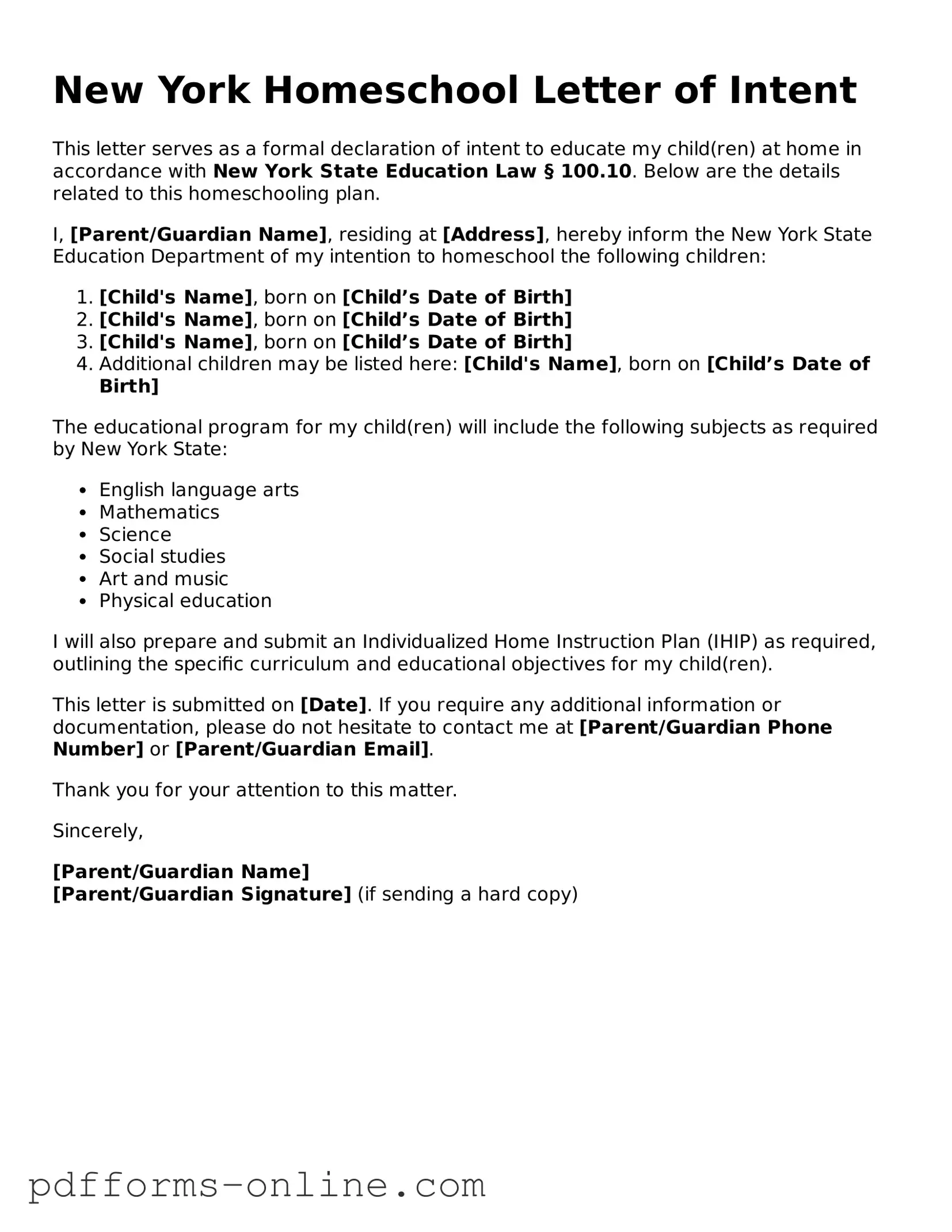New York Homeschool Letter of Intent
This letter serves as a formal declaration of intent to educate my child(ren) at home in accordance with New York State Education Law § 100.10. Below are the details related to this homeschooling plan.
I, [Parent/Guardian Name], residing at [Address], hereby inform the New York State Education Department of my intention to homeschool the following children:
- [Child's Name], born on [Child’s Date of Birth]
- [Child's Name], born on [Child’s Date of Birth]
- [Child's Name], born on [Child’s Date of Birth]
- Additional children may be listed here: [Child's Name], born on [Child’s Date of Birth]
The educational program for my child(ren) will include the following subjects as required by New York State:
- English language arts
- Mathematics
- Science
- Social studies
- Art and music
- Physical education
I will also prepare and submit an Individualized Home Instruction Plan (IHIP) as required, outlining the specific curriculum and educational objectives for my child(ren).
This letter is submitted on [Date]. If you require any additional information or documentation, please do not hesitate to contact me at [Parent/Guardian Phone Number] or [Parent/Guardian Email].
Thank you for your attention to this matter.
Sincerely,
[Parent/Guardian Name]
[Parent/Guardian Signature] (if sending a hard copy)
